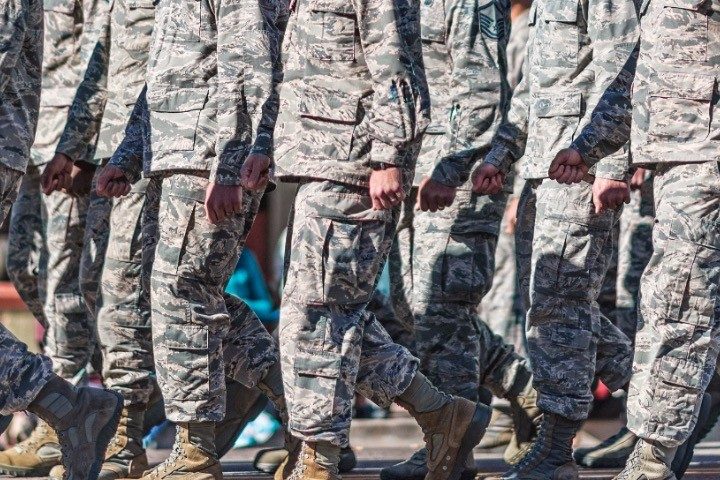
Climate hysteria has infected the United States Army. Last week, the fighting force released the “Army Climate Strategy” (ACS), a fifty-page document detailing its plan on how to adapt to and mitigate so-called climate change so that today’s soldiers are “better able to train, deploy, fight, and win the nation’s wars while reducing the force’s overall GHG emissions.”
The new plan was signed by Rachel Jacobson, Assistant Secretary of the Army for Installations, Energy and Environment; and Acting Deputy Chief of Staff Daniel Klippstein. It was initiated by President Joe Biden and Secretary of Defense Lloyd Austin.
The new U.S. Army climate plan describes the world’s current climate situation in a dire manner:
Climate change threatens Army missions, infrastructure, and people. The measurable and sustained increase in average global temperatures since 1880 has already caused significant degradation in environments around the world as evidenced by shrinking polar ice caps and glaciers, rising sea levels, saltwater intrusion into coastal areas, changes in rainfall patterns, and more frequent and severe extreme weather events.
Global temperatures may have risen since 1880, but everything else on the list is a matter of whom you ask. Polar ice caps and glaciers melt during summer months but increase again during winter months. Sea levels are rising slightly, but not at catastrophic levels. And “more frequent and severe extreme weather events” are in the eye of the beholder — not a simple fact as the ACS claims.
The ACS depends upon the United Nations for future projections: “Based on projections from the Intergovernmental Panel on Climate Change and others in the scientific community, the effects of climate change are expected to worsen without intervention.”
The Army’s climate strategy hopes to create “a resilient and sustainable land force able to
operate in all domains with effective mitigation and adaption measures against the key effects of climate change, consistent with Army modernization efforts.”
So, what — solar-powered tanks? Wind-powered artillery?
Not quite, but close. In the next year, the Army intends to introduce an Electric Light Reconnaissance vehicle, the first in what it hopes will be become a long line of rechargeable combat vehicles by 2050.
In addition, the Army hopes to provide “100 percent carbon-pollution-free electricity” for all of its installations by 2030 — less than eight years from now. They also hope to achieve a reduction of 50 percent in greenhouse emissions from all Army buildings by 2032, and become “net-zero” for emissions from all its installations by 2045.
The plan claims to recognize that the Army is somewhat limited as to what it can do to alleviate climate change, but says it can do better.
“While the Army cannot address all or even most GHG emissions, the right initiatives, investments, and policies can significantly reduce Army GHG emissions while at the same time enhancing readiness.”
The Air Force and the Space Force released their own plan within hours of the Army.
“Extreme weather and environmental conditions are already imposing high costs on Department of the Air Force installations and operational missions, while simultaneously posing new risks to our ability to train and operate effectively,” said Air Force Secretary Frank Kendall.
The U.S. Navy released their climate action plan in May. Said Secretary of the Navy Carlos Del Toro:
Climate change is one of the most destabilizing forces of our time, exacerbating other national security concerns and posing serious readiness challenges. Our naval and amphibious forces are in the crosshairs of the climate crisis and this strategy provides the framework to empower us to meaningfully reduce the threat of climate change.
As Del Toro’s statement shows, the military’s rhetoric on climate change is akin to how they used to describe the communist threat or the Nazi threat: They’ve personified it to the point that climate change — not China or Russia or Islamic terrorism — is the great enemy of our time.
Why is the United States military involving itself in the climate change debate at all? (And, despite what climate hysterics might tell you, there is still a debate.) The military is the very definition of a reactive force — not a proactive force. It is meant to destroy other military forces in the winning of wars. It is not meant to solve made-up problems like climate change or create social justice, sustainability, and equity for all.



